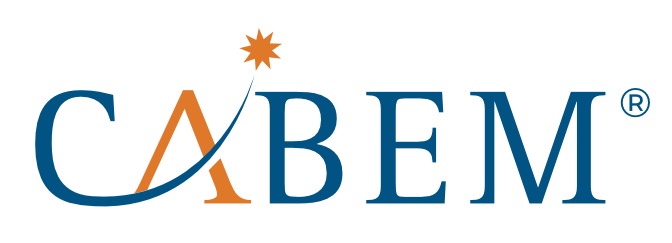Ensuring a Pipeline of Skilled Leaders
Competency-Based Succession Planning is a strategic process that focuses on identifying and developing individuals within an organization who have the potential to assume key leadership positions in the future. It involves assessing the competencies, skills, and knowledge required for various roles and creating a talent pipeline to ensure a smooth transition when current leaders retire or move on. This approach goes beyond simply filling vacancies; it aims to proactively identify and groom individuals who possess the necessary capabilities to drive organizational success.
What are the steps that can be taken in Competency-Based Succession Planning?
To ensure the success of Competency-Based Succession Planning, several critical steps should be taken:
Identify key positions
Identifying key positions is a fundamental step in succession planning. It involves a careful evaluation of the various roles within the organization to determine which ones are critical for its success and continuity. These positions typically hold significant responsibilities and have a direct impact on achieving strategic objectives, driving innovation, maintaining operational efficiency, or ensuring effective decision-making.
To identify key positions, organizations can conduct interviews and workshops with senior leaders, department heads, and other stakeholders. They can seek input from executives who have a deep understanding of the organization’s operations, goals, and challenges. Additionally, analyzing industry trends, benchmarking against competitors, and considering future growth plans can provide insights into which positions are critical for the organization’s long-term success.
Define competencies
Clearly defining the competencies, skills, and attributes needed for each identified position is a crucial aspect of succession planning. It involves a comprehensive analysis of the knowledge, abilities, and qualities that are essential for effective performance in those roles. Competencies refer to the specific knowledge, expertise, and skills required to carry out the tasks and responsibilities of the position. These competencies can vary depending on the nature of the role and the industry in which the organization operates.
Leadership competencies may include vision, strategic planning, change management, influencing and inspiring others, collaboration, and emotional intelligence. Identifying and developing these competencies ensures that potential successors are equipped to lead effectively and drive organizational success. Once the competencies are defined, they serve as a framework for assessing and evaluating potential candidates during the succession planning process. This framework helps identify individuals who possess the necessary skills and attributes or have the potential to develop them with targeted development initiatives.
Assess current talent
Evaluating the existing talent pool is a crucial step in succession planning as it allows organizations to identify individuals who demonstrate the potential to assume future leadership positions. This assessment involves a comprehensive review of employees’ performance, skills, and potential, gathering feedback from supervisors, peers, and other relevant stakeholders.
Performance reviews play a significant role in evaluating employees’ past and current performance. These reviews assess individuals’ achievements, contributions, and ability to meet or exceed expectations in their current roles. By examining performance records, organizations can identify high-performing individuals who consistently deliver results and exhibit the qualities necessary for leadership roles.
Skills assessments help evaluate employees’ technical expertise and their alignment with the competencies required for future positions. These assessments can include proficiency tests, job simulations, or evaluations of specific skills relevant to the targeted roles. Feedback from supervisors and peers also provides valuable insights into employees’ abilities, potential, and interpersonal skills. Supervisors can provide input on an employee’s leadership potential, their ability to handle additional responsibilities, and their growth trajectory within the organization. Peer feedback, obtained through 360-degree assessments or informal feedback channels, can offer different perspectives and observations about an individual’s collaboration, communication, and teamwork skills.
Develop individual development plans:
Creating individual development plans for high-potential employees is a crucial aspect of succession planning. These plans provide a roadmap for nurturing their growth, enhancing their competencies, and preparing them for future leadership roles. By outlining specific actions, training initiatives, and experiences, organizations can systematically develop the skills and capabilities of their talented employees.
Individual development plans typically take into account the competencies and skills needed for future roles, as identified during the succession planning process. The plans address any skill gaps and outline the steps required to bridge them. This may involve a combination of on-the-job experiences, formal training programs, mentoring relationships, coaching sessions, and stretch assignments.
- Job rotations involve temporarily assigning high-potential employees to different roles or departments within the organization. This provides them with a broader understanding of the organization’s operations, exposes them to different functions, and helps them develop a well-rounded skill set.
- Mentoring and coaching play a crucial role in individual development plans. Pairing high-potential employees with experienced leaders or executives allows for personalized guidance, support, and knowledge transfer. Mentors and coaches can provide valuable insights, share their experiences, and help individuals navigate challenges and opportunities. Skills become more meaningful. When the level of ability for each skill is quantified by proficiency levels, more information can be gained. Breaking skill levels into beginner, intermediate, and advanced for each skill immediately gives more information.
- Training programs can range from leadership development workshops to technical skill-building courses. By providing targeted training, employees can enhance their competencies, acquire new knowledge, and stay abreast of industry trends.
- Stretch assignments are valuable opportunities for high-potential employees to take on challenging projects or assignments that push them outside their comfort zones. These assignments provide opportunities for growth, foster innovation, and enable individuals to showcase their abilities.
Provide learning and development opportunities:
Offering targeted learning and development opportunities is a critical aspect of succession planning. It involves providing employees with the necessary resources and support to build the skills and competencies required for future leadership roles. By investing in their development, organizations can groom a strong talent pipeline and ensure a smooth transition when leadership positions become vacant.
- Leadership training programs focus on developing essential leadership skills such as strategic thinking, decision-making, communication, emotional intelligence, and conflict resolution. They provide participants with the knowledge and tools to effectively lead teams, drive organizational change, and make critical business decisions.
- Workshops and seminars provide employees with focused, hands-on learning experiences. These sessions can cover a wide range of topics, including project management, negotiation skills, effective communication, team building, and problem-solving. Workshops often incorporate interactive activities, case studies, and group discussions to enhance learning and skill application.
- Conferences and industry events provide exposure to the latest trends, best practices, and innovative ideas. Attending conferences can inspire individuals, expand their perspectives, and encourage continuous learning. It also allows employees to connect with industry experts and build relationships that can benefit their career growth.
- Coaching and mentoring relationships play a vital role in individual development. By pairing high-potential employees with experienced leaders, organizations facilitate personalized guidance and support.
Ongoing learning and development opportunities should be tailored to each individual’s needs, aligned with the competencies required for future roles, and linked to their individual development plans. It’s important to provide a mix of formal and informal learning experiences to cater to different learning styles and preferences.
Conduct regular succession readiness reviews and provide feedback
Regularly reviewing the progress of individuals in their development plans is a crucial step in succession planning. This involves evaluating their development, performance, and alignment with the required competencies for key positions. This ongoing assessment allows organizations to track the growth and development of potential successors, provide necessary feedback, and ensure that individuals are on track to meet their goals.
The review process involves evaluating the performance and skill development of individuals against the objectives outlined in their development plans. This assessment can include performance appraisals, skills assessments, observations, and feedback from supervisors, mentors, or coaches. By regularly reviewing progress, organizations can identify strengths, areas for improvement, and any gaps that need to be addressed to prepare individuals for future leadership roles.
Transition planning
When a leadership vacancy arises, having a well-defined transition plan in place is crucial for ensuring a smooth and successful transition. This plan encompasses various elements that facilitate the transfer of knowledge, responsibilities, and relationships from the outgoing leader to the successor.
Knowledge transfer is a key component of the transition plan. It involves capturing and sharing critical information, insights, and best practices accumulated by the outgoing leader. This can be achieved through documentation, formal knowledge transfer sessions, or informal discussions. The goal is to ensure that the successor has access to the necessary information and context to effectively carry out their new role.
By having a well-defined transition plan in place, organizations can mitigate the risks associated with leadership vacancies and ensure business continuity. A smooth transition allows the successor to quickly assume their responsibilities, build relationships, and continue the organization’s momentum. It also acknowledges the contributions of the outgoing leader and supports their successful transition to a new phase in their career.
Competency Management Software and Succession Planning
By implementing a comprehensive and well-executed succession planning strategy, organizations can ensure a robust talent pipeline, reduce disruptions during leadership transitions, retain top talent, and sustain long-term success.
Competency management software plays a vital role in streamlining the succession planning process by providing a comprehensive and efficient platform to manage and assess employee competencies. This software enables organizations to define and track the specific skills, knowledge, and attributes required for various roles within the organization. It allows for the creation of competency frameworks that align with the organization’s strategic goals and values. With competency management software, organizations can easily identify high-potential employees who possess the necessary competencies for future leadership positions.
The software provides a centralized database to store and track employee performance, skills assessments, training records, and development plans. This facilitates a systematic and data-driven approach to succession planning, making it easier to evaluate individuals’ readiness for key positions, identify skill gaps, and design targeted development initiatives.
Competency management software can generate reports and analytics that provide valuable insights into the organization’s talent pool, enabling better decision-making and resource allocation. Overall, the use of competency management software streamlines the succession planning process, improves accuracy and efficiency, and helps organizations proactively develop a strong pipeline of future leaders.
The CABEM Competency Manager is a workforce development system that provides an at-a-glance view of an organization’s competency framework for every location, department, role, and individual across the enterprise. CABEM recognizes that competency is attained by methods not typically embraced by the functionality available within an LMS, such as online training and tests. People become competent through not only formal but experiential learning.
The Competency Management platform aggregates multiple completion methods for learning and development, such as witnessing, approvals, and traditional LMS techniques. It eliminates the need for spreadsheets and filing cabinets with document libraries to retain user records and information for current and past years. The platform identifies learning/development pathways to help organizations comply with quality management standards with document tracking, archived training materials, version control, and more, allowing organizations to pass audits easily. It provides the ability to manage risk, automate certifications, and publish reports on actionable data, improving efficiency overall across the enterprise. The gap analysis report is available to visually see the gaps someone has to fill a certain role.
If you are ready to use Competency Manager to support your organization’s succession planning, or just want more information regarding Cabem’s competency solutions, visit our website.

